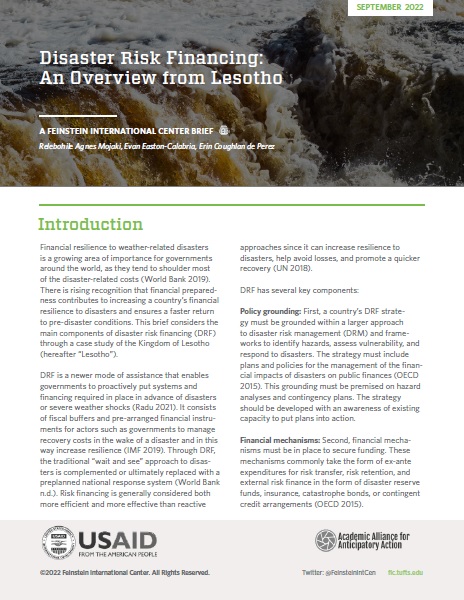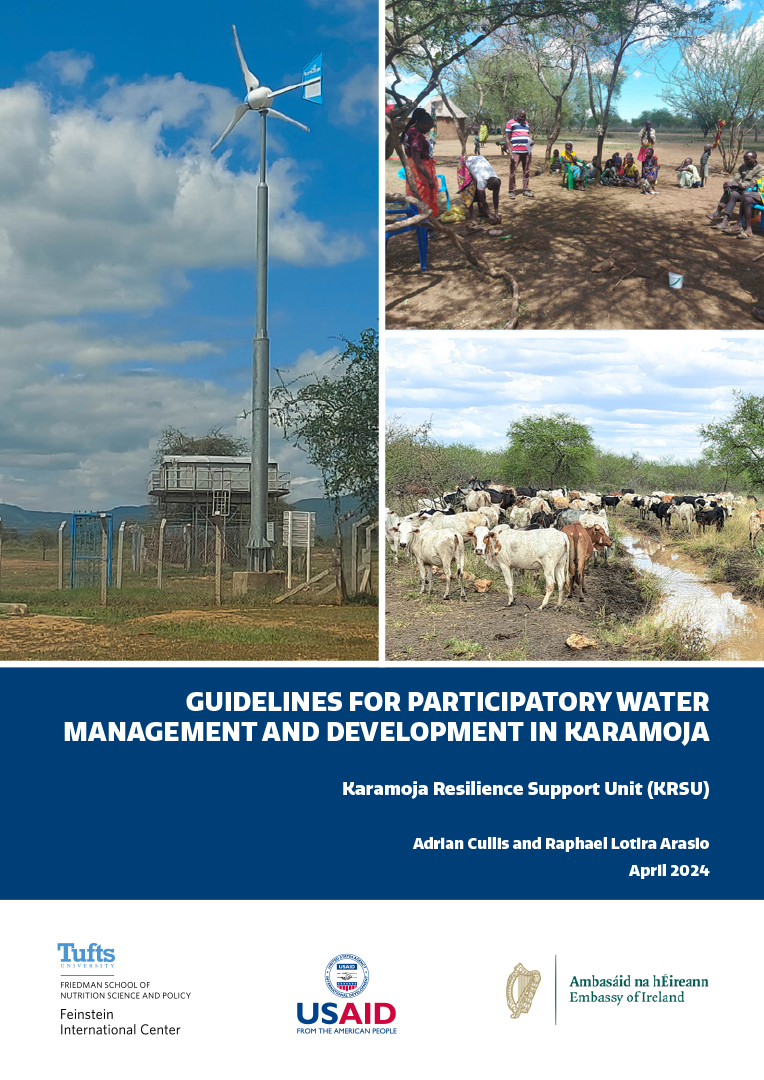How do governments pay for the impacts of climate-related disasters, including helping people before they strike? While disaster risk financing (DRF) is a newer area of practice, governments around the world are increasingly incorporating it into plans and budgets. This brief examines how the Kingdom of Lesotho, a small country in Southern Africa that is highly vulnerable to climate hazards such as drought, heatwaves, and floods, is equipped to make use of DRF.
This brief unpacks the disaster management landscape in Lesotho looking at DRF policies–both financial and disbursal mechanisms. In Lesotho, we found that:
- A paradigm shift from reactive to anticipatory approaches to disaster risk management has occurred, evidenced by the 2020 Disaster Risk Management Bill and the 2020 MoU signed by the Government of Lesotho and the African Risk Capacity.
- While the country is preparing to develop a national DRF strategy, existing financial disbursal mechanisms need to be adapted alongside it. This includes:
- Making two disaster contingency funds fit for anticipatory action
- Developing shock-responsive social safety nets that can be scaled both up and out
- Continuing the shift from manual social protection cash transfers to digital cash transfers
A few topics for additional research in Lesotho include (1) better understanding how to scale out social protection safety nets for anticipatory action and (2) evaluating the outcomes, including the timing of receipt, of existing DRF payment mechanisms.
This brief was written as part of the work of the Academic Alliance on Anticipatory Action (4As), a consortium of universities around the world seeking to inform and enhance anticipatory action. The 4As Consortium is funded by USAID and led by Tufts University in partnership with Bangladesh University of Engineering and Technology, Eduardo Mondlane University in Mozambique. Makerere University in Uganda, the National University of Lesotho, University of Namibia, and University of the Philippines.







